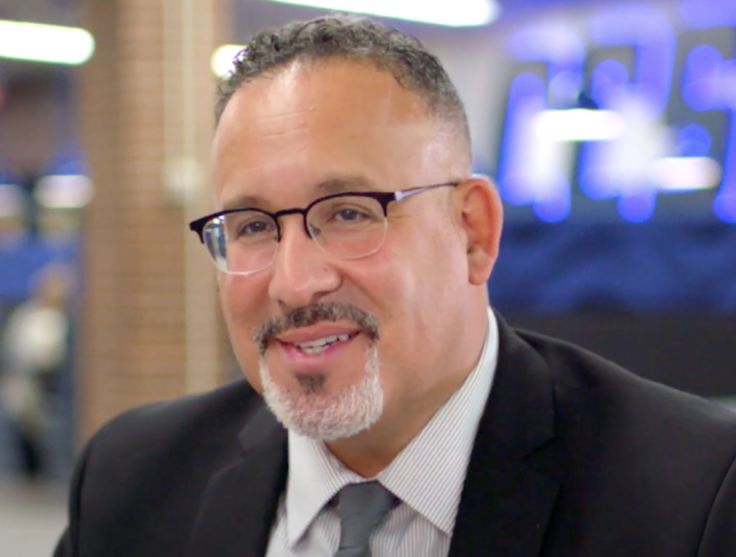Secretary of Education Miguel Cardona said it's "premature" to determine if schools can resume in-person instruction this fall, despite a growing body of evidence that shows students can safely return to the classroom.
In a Wednesday interview with MSNBC's Chris Hayes, Cardona said the rate of COVID-19 transmission in a community would play a role in determining whether K-12 students will receive face-to-face instruction. Hayes pressed Cardona for the Education Department's stance on whether remote learning should continue at the start of the 2021-2022 school year.
"It's premature to tell," Cardona said. "One thing I know as a former commissioner of education, COVID-19 numbers will dictate how we move to reopen schools. So it's not just about what's happening in the schools. It’s about what's happening in the community."
Cardona's comments came just hours after the Education Department's National Safe School Reopening Summit, during which educators from across the United States discussed safe reopening strategies. New Jersey governor Phil Murphy (D.) announced the same day that families would not have an option to continue remote learning next fall unless "the world goes sideways."
CDC director Rochelle Walensky in February said that schools can safely reopen before teachers have access to the coronavirus vaccine. A January study from the nation's top infectious disease experts found that coronavirus outbreaks in classrooms have been "rarely reported." And an American Academy of Pediatrics study found that coronavirus transmission is "extremely rare" in the classroom setting.
The Biden administration originally pledged to reopen schools by the end of April. White House Press Secretary Jen Psaki has since walked back that claim and now says the administration wants "some" students learning in person "at least one day a week."
White students have returned to the classroom faster than minority students despite evidence that remote learning has widened racial disparities in education and disproportionately harmed black and Hispanic students. Fifty-eight percent of black students and 56 percent of Hispanic students continue to learn from home, compared with just 27 percent of white students, according to a new Education Department study.
Cardona called those findings "encouraging" but said the department "still [has] a lot of ground to go" to close the "critical gaps" in learning access for students of color.
